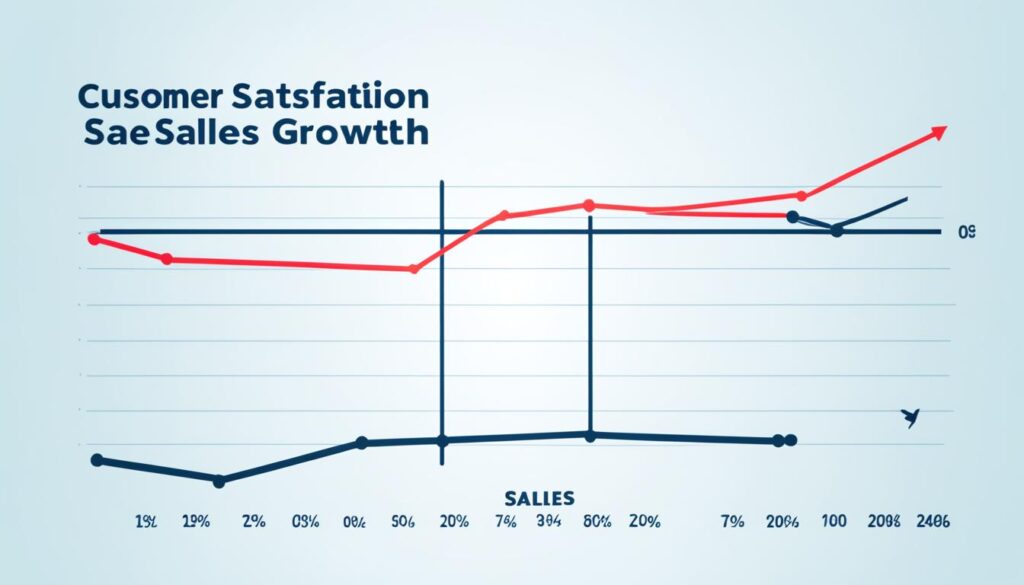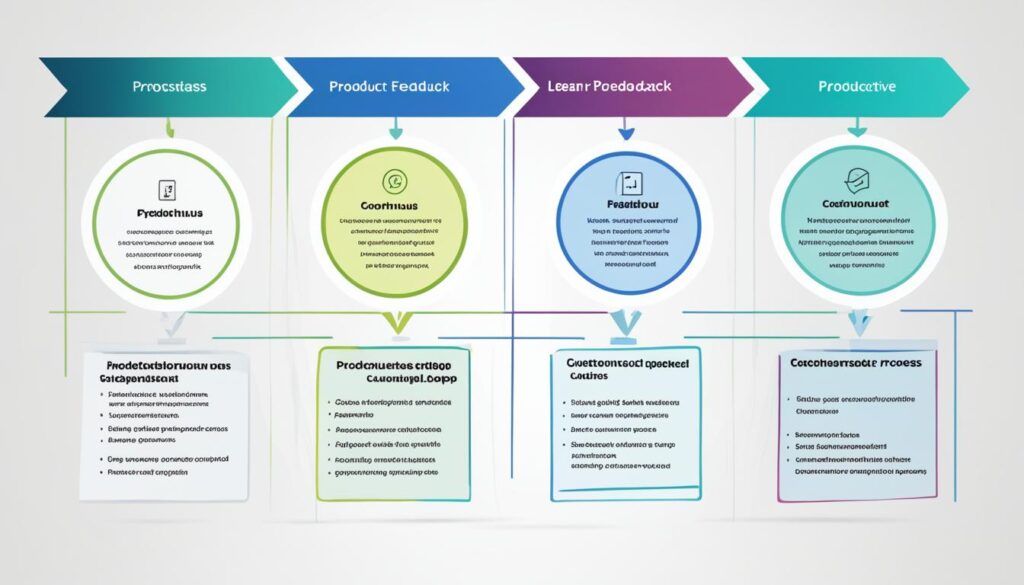Welcome to our article on achieving product market fit for your startup! Whether you’re a seasoned entrepreneur or just starting out, understanding and achieving product market fit is crucial for the success of your business. In this article, we will delve into what product market fit is, how to measure and understand it, and the Lean Product Process, a framework that can guide you on your journey towards achieving product market fit.
Product market fit is the holy grail of startups. It is the state where your product aligns perfectly with the needs and desires of your target market. When you achieve product market fit, you have found the sweet spot where your solution resonates deeply with your customers, and they are willing to pay for it. It’s the validation that your product has a viable market and the foundation for sustainable growth.
So, how do you achieve product market fit? It starts with identifying your target customer and understanding their needs. By conducting market research, gathering user feedback, and conducting interviews, you can gain valuable insights into your customers and their pain points. With this knowledge, you can build a product that addresses their needs and satisfies their desires.
The Lean Product Process is a systematic approach to achieving product market fit. It consists of six steps: determining your target customer, identifying their underserved needs, defining your value proposition, specifying your minimum viable product (MVP) feature set, creating your MVP prototype, and testing it with customers. This process helps you iterate and refine your product based on customer feedback, increasing your chances of achieving product market fit.
Stay tuned as we dive deeper into each step of the Lean Product Process and provide you with actionable strategies and insights to help you achieve product market fit for your startup. Let’s get started on your journey towards success!
Key Takeaways:
- Product market fit is the state where your product meets the needs of a specific market and its customers
- Understanding and measuring product market fit involves surveys, user feedback, interviews, and collecting data from customer support
- The Lean Product Process is a framework that guides you towards achieving product market fit
- Determining your target customer, identifying their underserved needs, and defining your value proposition are crucial steps in achieving product market fit
- Specifying your MVP feature set, creating a prototype, and testing it with customers can help you refine your product and increase your chances of achieving product market fit
What is Product Market Fit?
Product market fit is the state where your product meets the needs of a specific market and its customers. It happens when you have identified your target customer and are serving them with the right product.
While surveys can help measure product market fit, it is more about having an in-depth and tangible understanding of your customers and how they feel about your product. Organic growth and willingness to pay for your product are signs of product market fit.
“Product market fit is when customers tell their friends about your product.”
Understanding the needs and preferences of your target market is crucial for achieving product market fit. It requires continuous research, user feedback, and incorporating the insights gathered into product development and marketing strategies.
Having a product that resonates with your target market not only leads to customer satisfaction but also drives business growth. Product market fit is the key to unlocking opportunities for scaling and expanding your customer base.
Measuring and Understanding Product Market Fit
Measuring product market fit is crucial for evaluating the success of your startup. While surveys can provide valuable insights, true product market fit goes beyond numbers and requires a deeper understanding of your customers’ needs and preferences.
One effective way to gauge product market fit is by conducting surveys that identify the percentage of users who consider your product a “must-have.” This metric can provide valuable feedback on whether your product is meeting the expectations and demands of your target market.
However, product market fit goes beyond survey results. It involves understanding the problems your customers face, generating innovative ideas, and continuously improving your product to better serve their needs. One way to gain this deeper understanding is through one-on-one interviews with your users and customers. These interviews allow you to build relationships, uncover insights, and identify areas for improvement.
Collecting data from your customer support staff is another essential element in measuring product market fit. They interact directly with your customers and can provide valuable feedback regarding their needs and problems. Setting up systems to track and analyze this data can help you identify patterns and trends, enabling you to make informed decisions on how to improve your product and better meet customer expectations.
To summarize, while surveys can serve as an initial metric for product market fit, understanding your customers on a deeper level through interviews and leveraging data from your customer support team are crucial components in measuring and achieving true product market fit.

The Importance of Understanding Your Customers
By understanding your customers on a profound level, you can tailor your product to meet their specific needs, preferences, and pain points. This understanding is the foundation for achieving product market fit and building long-lasting customer relationships.
“Your most unhappy customers are your greatest source of learning.” – Bill Gates
Listening to your customers and incorporating their feedback into your product development process is key to ensuring continuous improvement and maintaining a competitive edge in the market.
The Role of Data in Understanding Product Market Fit
Collecting and analyzing data plays a crucial role in understanding product market fit. By tracking customer needs, pain points, and preferences, you can uncover valuable insights that enable you to refine your product, prioritize features, and drive customer satisfaction.
Utilizing customer relationship management (CRM) systems and support ticketing platforms can help you keep a record of customer interactions and identify recurring issues or areas for improvement. Additionally, implementing analytics tools and user behavior tracking can provide valuable data on customer engagement and usage patterns, allowing you to make data-driven decisions and continuously optimize your product to better fit the market.
Building a Product That Resonates With Your Target Market
Understanding product market fit involves more than just measuring metrics. It requires a comprehensive approach that combines quantitative data, qualitative insights, and a deep understanding of your target market’s needs and desires. By continuously listening, iterating, and adapting, you can build a product that resonates with your customers and establishes a strong foothold in the market.
The Lean Product Process
The Lean Product Process is an iterative framework that can help you achieve product market fit. It consists of six steps: determining your target customer, identifying underserved customer needs, defining your value proposition, specifying your minimum viable product (MVP) feature set, creating your MVP prototype, and testing your MVP with customers. This process guides you through each layer of the Product-Market Fit Pyramid, a model that defines product-market fit using five key components.
1. Determining Your Target Customer
2. Identifying Underserved Customer Needs
3. Defining Your Value Proposition
4. Specifying Your MVP Feature Set
5. Creating Your MVP Prototype
6. Testing Your MVP with Customers
Each step in the Lean Product Process plays a crucial role in helping you understand your target market and create a product that meets their needs. Let’s dive into each step in detail:
Determining Your Target Customer
Identifying your target customer is the first step in the Lean Product Process. It involves segmenting the market and identifying a specific group of people with similar needs and behaviors. By understanding your target customer, you can tailor your product to their specific requirements and preferences. Creating personas, which are fictional representations of your target customers, can help you gain a clearer understanding of who they are and what they need. Remember to iterate on your target customer definition based on learning and feedback.
Identifying Underserved Customer Needs
Once you have defined your target customer, it’s time to identify their underserved needs. These are the specific needs that existing solutions in the market fail to adequately address. By identifying and addressing these underserved needs, you can differentiate your product and create unique value for your customers. Conduct thorough market research, gather user feedback, and analyze customer pain points to uncover these underserved needs.
Defining Your Value Proposition
Your value proposition is what sets your product apart from the competition. It defines how your product will meet customer needs better than existing alternatives. When defining your value proposition, focus on the features and benefits that differentiate your product and provide a compelling value to your target customers. Steve Jobs once said, “People think focus means saying yes to the thing you’ve got to focus on. But that’s not what it means at all. It means saying no to the hundred other good ideas that there are. You have to pick carefully.” Stay focused on your value proposition to create a strong product strategy.
Specifying Your MVP Feature Set
After defining your value proposition, it’s time to specify the features that will be included in your minimum viable product (MVP). The MVP approach focuses on building only what is needed to deliver enough value to your target customer and validate your product direction. Prioritize features based on their impact and effort required for implementation. As you gather feedback from customers and learn more about their needs, iterate on your MVP feature set to continuously improve your product.
Creating Your MVP Prototype
Once you have specified your MVP feature set, it’s time to create a prototype of your minimum viable product. A prototype is a simplified version of your product that allows you to test its functionality and gather user feedback. Create a prototype that demonstrates the core features and user experience of your product. This prototype will serve as a tangible representation of your product concept and help you gather valuable insights from potential customers.

Testing Your MVP with Customers
The final step in the Lean Product Process is to test your MVP with customers. This involves gathering feedback, conducting usability testing, and analyzing user behavior to validate your product-market fit. Engage with your target customers and observe how they interact with your MVP prototype. Collect their feedback, identify areas for improvement, and make iterative changes to enhance the user experience. Testing your MVP with customers is crucial to refine your product and align it more closely with their needs.
Determining Your Target Customer
Determining your target customer is the first crucial step in the Lean Product Process. It sets the foundation for understanding who your product is designed for and how to meet their needs effectively. To accomplish this, you need to utilize market segmentation strategies to identify a specific group of people who share similar needs and behaviors.
Market segmentation allows you to dig deeper into your potential customer base, enabling you to identify key characteristics and preferences. By segmenting your market, you can better tailor your product to meet the unique needs and desires of your target audience.
One effective strategy to understand your target customers is to create personas. Personas are fictional representations of your ideal customers, embodying their demographic, psychographic, and behavioral attributes. These personas help your product team visualize and empathize with your target customers, enabling them to design and build a product that truly resonates.
When creating personas, consider incorporating factors such as age, gender, occupation, interests, motivations, and pain points. The more detailed and accurate your personas, the better you can align your product with your target customer’s wants and needs.

Iterating on your target customer definition is crucial in the Lean Product Process. As you gain insights and feedback from your target customers, be open to refining and adjusting your understanding of who they are. Remember, the key is to continuously learn and adapt to better serve your target customers.
Identifying Underserved Customer Needs
Once you have defined your target customer, the next crucial step in achieving product market fit is identifying their underserved needs. These are the specific needs that existing solutions in the market fail to adequately address. By identifying and addressing these underserved needs, you have the opportunity to create value for your customers and differentiate your product from competitors.
To understand the underserved needs of your target customers, it is essential to conduct thorough market research. This can involve analyzing customer feedback, conducting surveys, and studying competitor products to identify gaps and areas for improvement.
By identifying and addressing the underserved needs of your target customers, you can create a product that truly resonates with them and meets their unique requirements. This will not only increase customer satisfaction but also contribute to achieving product market fit and gaining a competitive advantage in the market.
Defining Your Value Proposition
Your value proposition is a critical component of your product strategy. It defines how your product will meet customer needs better than the alternatives available in the market. By focusing on the features and benefits that differentiate your product from competitors, you can create a compelling offering that resonates with your target audience.
Steve Jobs, the co-founder of Apple, recognized the significance of a strong value proposition. He emphasized the importance of focus and saying no to ideas that don’t align with it. By staying true to your value proposition, you can maintain a clear direction and deliver a product that addresses your customers’ pain points effectively.
“Your value proposition is the foundation upon which you build your product strategy. It sets you apart from the competition and convinces customers that your product offers a unique and valuable solution to their needs.”
When defining your value proposition, it is essential to consider the unique aspects of your product. Think about what sets it apart and how it delivers value to your customers. Highlight the key features and benefits that make your product a superior choice. This will help you communicate your value proposition clearly to your target audience and differentiate yourself in the market.
Key Factors to Consider in Defining Your Value Proposition:
- Identify the specific pain points your product addresses
- Highlight the unique features that solve those pain points
- Showcase the benefits customers can expect from using your product
- Emphasize the competitive advantages your product has over alternatives
- Ensure your value proposition is concise, clear, and easy to understand
By having a well-defined value proposition, you can attract and retain customers who resonate with your product’s unique offering. It acts as a guiding principle for your product development and marketing strategies, helping you align your efforts towards delivering value to your target audience.

Specifying Your MVP Feature Set
Once you have defined your value proposition, it’s time to determine the features that will make up your minimum viable product (MVP). The MVP approach centers around building only what is necessary to provide enough value to your target customer and validate your product direction.
To successfully specify your MVP feature set, it’s crucial to prioritize features based on their impact and the effort required to implement them. You want to focus on the features that will deliver the most value to your customers while minimizing development time and resources.
Consider conducting user research and gathering feedback from your target audience to gain a better understanding of their needs and preferences. This information will help you identify the core functionalities and must-have features for your MVP.
Remember, the purpose of your MVP is to demonstrate the viability of your product idea and gather valuable insights from your customers. By iteratively refining and enhancing your MVP based on user feedback, you can ensure that your product meets their expectations and addresses their pain points effectively.
As you specify your MVP feature set, keep in mind that simplicity and focus are key. Avoid the temptation to include too many features at once, as this can lead to scope creep and an overly complex product. Instead, aim for a streamlined and user-friendly experience that showcases the core value your product offers to your customers.
Remember the old saying: “Less is more.” By prioritizing features strategically and keeping your MVP lean and focused, you increase your chances of achieving product market fit and setting a strong foundation for future growth.

Conclusion
Achieving product market fit is crucial for the success of your startup. It is a continuous process that requires iterating and refining your product based on customer feedback to meet their needs effectively. The Lean Product Process provides a framework to guide you in working towards product market fit.
To achieve product market fit, start by understanding your target customers. Identify their underserved needs and ensure that your product addresses those needs better than existing solutions in the market. Define a strong value proposition that distinguishes your product from competitors, highlighting its unique features and benefits.
Specify the features that will be included in your minimum viable product (MVP). The MVP approach focuses on building only the essential features that provide enough value to validate your product direction. Create an MVP prototype and test it with your target customers to gather valuable feedback for further iteration.
By following these steps and utilizing the Lean Product Process, you can increase your chances of achieving product market fit and attaining success for your startup. Remember that product market fit is a continuous journey, and staying attuned to your customers’ needs and feedback is crucial for ongoing improvement and growth.
FAQ
What is product market fit?
Product market fit occurs when a startup successfully identifies its target customer and serves them with the right product. It is about building a product whose value proposition satisfies the needs of a market and its potential customers.
How do you achieve product market fit?
Achieving product market fit is crucial for scaling and finding more customers within your target market. It can be achieved through research such as user feedback and interviews, continuously improving your product based on customer needs, and focusing on building relationships with your users and customers.
How do you measure and understand product market fit?
While surveys can help measure product market fit, it is more about having an in-depth and tangible understanding of your customers and how they feel about your product. This involves identifying problems, generating ideas, improving your product, and building relationships through one-on-one interviews with your users and customers.
What is the Lean Product Process?
The Lean Product Process is an iterative framework that can help you achieve product market fit. It consists of six steps: determining your target customer, identifying underserved customer needs, defining your value proposition, specifying your minimum viable product (MVP) feature set, creating your MVP prototype, and testing your MVP with customers.
How do you determine your target customer?
Determining your target customer involves using market segmentation to identify a specific group of people with similar needs and behavior. Creating personas to describe your target customers can help ensure everyone on the product team understands who they are designing and building the product for. Iterating on your target customer definition based on learning and feedback is crucial.
How do you identify underserved customer needs?
Underserved needs are the specific needs that are not adequately met by existing solutions in the market. To identify these needs, you need to conduct research and listen to your target customers. This involves analyzing customer feedback, conducting user interviews, and staying updated on industry trends and competitors.
What is a value proposition?
Your value proposition defines how your product will meet customer needs better than the alternatives. It focuses on the features and benefits that differentiate your product from competitors. It is important to have a clear and compelling value proposition that resonates with your target customers.
How do you specify your MVP feature set?
The MVP approach focuses on building only what is needed to create enough value for your target customer to validate your product direction. To specify your MVP feature set, you need to prioritize features based on impact and effort. It is important to iterate on your MVP based on customer feedback and continuously refine it to meet their needs.
Can you provide an example of product market fit?
An example of product market fit is when a startup launches a new mobile app that solves a specific problem for a target audience. After the launch, the startup receives positive user feedback, organic growth, and customers are willing to pay for the app’s premium features. This is a sign of product market fit as the startup has successfully identified their target customer and built a product that meets their needs.
